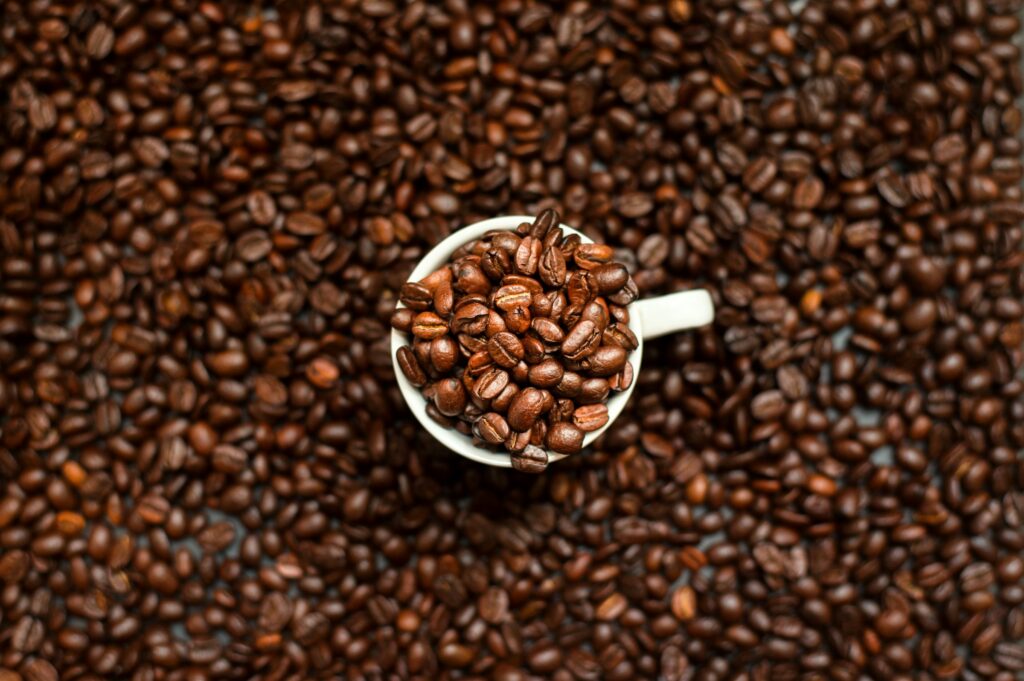Coffee is magical—until the jitters hit, the 2 a.m. wide-eyes kick in, or your doctor casually says, “Maybe cut back.” That’s where decaf comes in.
Decaf coffee isn’t some mysterious impostor; it’s real coffee with most of the caffeine removed.
People drink it to dodge sleepless nights, calm anxiety, or just enjoy an evening cup without a side of restlessness.
But here’s the big question: how do they actually take the caffeine out, and does it still taste like the “real deal”? Let’s dig in!
What Is Decaf Coffee?
Decaf coffee is exactly what it sounds like, which is coffee that’s had most of its caffeine stripped away before it ever reaches your mug.
The keyword here is “most,” because despite the name, it’s not completely caffeine-free.
A cup of decaf usually still holds about 2–5 milligrams of caffeine, compared to the 95 or so you’d get in a regular cup.
That tiny amount is usually too little to cause the jitters, but it’s worth knowing if you’re extremely sensitive.
So why do people reach for decaf in the first place? For some, it’s health-driven because caffeine can stir up anxiety, raise heart rate, or mess with sleep.
For others, it’s lifestyle—they still love the taste and ritual of coffee but don’t want to be staring at the ceiling at midnight.
And then some just want a warm cup in the evening without the side effects of a double shot of espresso lurking in the background.
In short, decaf is the peace treaty between coffee lovers and caffeine’s less friendly side.
How Is Decaf Coffee Made?
A. The Decaffeination Process – Step by Step
The journey to decaf starts before roasting, while beans are still “green,” meaning raw and unroasted.
At this stage, they’re soaked or steamed to open up the pores, making it easier to pull caffeine out without destroying the flavor compounds.
Then comes the main event: caffeine extraction.
Different methods remove caffeine in different ways, but the end goal is the same—to get rid of most of the stimulant while leaving the aroma, oils, and sugars that give coffee its character.
After the caffeine is removed, the beans are dried, shipped off, and roasted just like their regular counterparts. The trick is finding a process that balances effectiveness with taste preservation.
B. Main Methods of Decaffeination
Swiss Water Process
This is the darling of the coffee world for people who want clean and natural. It uses nothing but water, temperature, and carbon filters to separate caffeine from the beans.
The method is entirely chemical-free, which makes it popular among health-conscious coffee drinkers.
Because it gently removes caffeine without harsh solvents, it tends to keep more of the bean’s original flavor intact. That’s why specialty roasters often brag about “Swiss Water Decaf” on their bags.
Solvent-Based Methods (Methylene Chloride / Ethyl Acetate)
These are the old-school workhorses of decaf production. Beans are soaked in water or steamed, then either directly or indirectly treated with solvents like methylene chloride or ethyl acetate.
These solvents bond to the caffeine molecules and carry them away.
While it might sound scary, the process is heavily regulated, and the tiny traces that remain are considered safe by health authorities. The upside? It’s efficient and affordable.
The downside? Some coffee drinkers claim it mutes certain flavors compared to water-based methods.
CO₂ Process
This one feels like science fiction. High-pressure carbon dioxide is used to target caffeine molecules and pull them out, leaving the flavor compounds mostly untouched.
It’s precise, fast, and very effective, which makes it a favorite for large-scale commercial production.
The downside is the cost because specialized equipment makes it pricier, so you’ll often see it used by big companies rather than small-batch roasters.
Other Experimental or Natural Approaches
Beyond these main techniques, a few niche methods pop up here and there. Some experiments use glycerin or triglycerides (natural fats) to pull caffeine out, though they’re far less common.
There’s even research into breeding naturally low-caffeine coffee plants, though that’s more science lab than supermarket shelf for now.
While these alternatives aren’t mainstream, they hint at how much innovation is bubbling in the world of decaf.
Does Decaf Taste the Same as Regular Coffee?
Decaf coffee often gets a bad rap for tasting different, and in many cases, it does—though not always in a bad way.
The decaffeination process inevitably alters some of the delicate flavor compounds, since caffeine isn’t the only thing that gets pulled out during extraction.
That’s why some decaf can come across as flatter, milder, or less complex compared to its fully caffeinated twin. The taste you end up with depends on several factors.
The method matters because a Swiss Water decaf tends to keep more of the bean’s natural notes, while solvent-based methods can strip away a bit more character.
Roast type also plays a role; darker roasts often mask the subtle differences, making decaf taste closer to regular, while light roasts show off both the strengths and weaknesses of the process.
And then there’s bean quality: a high-grade Ethiopian decaf will almost always beat a bargain-bin Colombian, no matter how it’s processed.
Put simply, decaf doesn’t have to taste “bad,” but it rarely tastes identical.
Pros and Cons of Decaf Coffee
Pros
- Lower caffeine = fewer jitters and better sleep – You can sip without worrying about racing thoughts or tossing and turning at night.
- Can still enjoy coffee rituals – The smell, the warmth, the comfort of a cup stays the same even without the buzz.
- Suitable for people with medical restrictions – Those with heart issues, anxiety, or caffeine sensitivity can still enjoy coffee safely.
Cons
- May lose depth or brightness of flavor – Some of the natural complexity fades during decaffeination.
- More expensive in some cases – Specialty decaf often costs more because of the extra processing involved.
- Harder to find high-quality decaf options compared to regular beans – While the market is growing, decaf choices are still limited in many cafés and grocery stores.
Health Considerations
Decaf isn’t just about taste, but it can be a smart choice for your health too.
Cutting back on caffeine can ease pressure on your heart, calm anxious feelings, and help you actually fall asleep before the rooster crows.
Still, a lot of myths swirl around decaf, the biggest one being that it’s “full of chemicals.”
The truth? Modern decaf methods are highly regulated and safe.
Solvents like methylene chloride may sound intimidating, but the trace amounts left in beans are far below harmful levels, and many methods like the Swiss Water Process are completely chemical-free anyway.
In other words, you’re not sipping a science experiment—you’re just drinking coffee minus most of the kick. So who should consider switching or mixing in decaf?
People with caffeine sensitivity, anyone struggling with insomnia, those managing heart issues, or even folks who just love an after-dinner cup but hate being wide awake at 2 a.m.
For many, blending regular and decaf beans is the sweet spot because you still get some pep in your step without pushing your system over the edge.
Tips for Choosing Good Decaf Coffee
Look for Swiss Water or CO₂ Process Labels
Not all decaf is created equal, and the method matters. If you see “Swiss Water Process” or “CO₂ decaf” on the bag, that’s a strong sign you’re getting beans that keep more of their natural flavor.
Both methods are considered cleaner and gentler, and they avoid the flat, lifeless taste that gives decaf a bad reputation.
Buy from Specialty Roasters Instead of Generic Supermarket Decaf
The decaf you find in dusty supermarket tins usually isn’t the star of the show. Specialty roasters, on the other hand, take decaf seriously.
They choose high-quality beans and often use better processing methods, which means you’ll actually enjoy what’s in your cup instead of tolerating it.
Try Blends vs Single Origin to Balance Flavor
If you want a dependable, balanced taste, blends are your friend. Mixing beans from different regions can smooth out the rough edges of decaf and give you a fuller profile.
But if you’re curious, try a single-origin decaf at least once, as you might be surprised by how distinct and vibrant it can be, even without the caffeine.
Experiment with Roast Levels—Dark Roasts Sometimes Mask Decaf’s Milder Notes
Light roasts show off the bean’s true character, but they can also highlight any flavor lost during decaffeination.
Dark roasts, on the other hand, cover that up with smoky, bold notes, making decaf taste closer to regular coffee. Medium roasts sit somewhere in the middle, offering balance.
The best advice? Play around. The right roast could be the difference between a cup that feels “meh” and one that feels magical.
Final Words
Decaf may never be a carbon copy of regular coffee, but with the right beans and process, it can still deliver a satisfying cup.
Don’t write it off until you’ve tried a well-made version because you might be surprised at how good it tastes.
Your taste buds might thank you, and your sleep schedule definitely will!
FAQs
Is decaf coffee 100% caffeine-free?
No. Decaf still has a small amount of caffeine, usually 2–5 milligrams per cup, compared to about 95milligrams in regular coffee.
Is the Swiss Water Process healthier?
It’s not necessarily “healthier,” but it is chemical-free and popular with people who prefer a natural method of decaffeination.
Does decaf have less acidity?
Not always. Acidity depends more on the bean origin and roast level than whether it’s decaf or not.
Can decaf still give me energy?
Yes, but not from caffeine. The warmth, aroma, and ritual can still perk you up mentally, even if your nervous system isn’t buzzing.
Why does some decaf taste bland?
The decaf process can strip away certain flavor compounds, and cheaper beans don’t help. Choosing Swiss Water or CO₂ processed decaf from quality roasters usually gives a richer cup.



